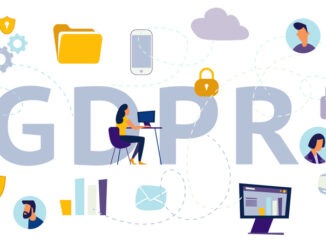
Kevin Parker, Senior finance business partner, explores the dimensions of AI, highlighting how it is reshaping education today and exploring what lies ahead for the rest of the decade
Artificial Intelligence (AI) is transforming various sectors, and education is no exception. Its integration into the education sector brings numerous benefits, raises certain risks, and heralds significant changes in teaching methodologies for the future.
Benefits of AI in Education
Personalised learning
AI enables personalised learning experiences by tailoring educational content to meet individual student needs. Adaptive learning platforms utilise AI algorithms to assess students’ strengths and weaknesses, providing customised lessons that enhance their learning efficiency. This approach ensures that students receive the right level of challenge and support, fostering better engagement and comprehension.
Automated administrative tasks
AI streamlines administrative tasks, such as grading and attendance tracking, which traditionally consume significant time and effort for educators. Automated grading systems can evaluate multiple-choice tests and even some types of written responses, allowing teachers to focus more on interactive and creative aspects of teaching. Moreover, AI-powered attendance systems can track student presence accurately, ensuring more reliable record-keeping.
Enhanced accessibility
AI tools enhance accessibility for students with disabilities. Speech-to-text and text-to-speech applications, for example, help students with visual or auditory impairments to participate more fully in classroom activities. Additionally, AI-driven language translation tools break down language barriers, enabling non-native speakers to access educational materials in their preferred languages.
Intelligent tutoring systems
Intelligent tutoring systems provide real-time feedback and support to students outside the traditional classroom setting. These AI tutors offer explanations, answer questions, and guide students through complex problems, mirroring the one-on-one interaction that human tutors provide. Such systems are particularly beneficial in subjects like mathematics and science, where step-by-step guidance is crucial.
Risks of AI in Education
Data privacy concerns
The use of AI in education involves collecting and analysing vast amounts of student data. This raises significant concerns about data privacy and security. Ensuring that sensitive information is protected against breaches and unauthorised access is paramount. Schools and educational institutions must implement robust data protection measures to safeguard student information.
Bias and fairness issues
AI systems are only as unbiased as the data they are trained on. If the training data contains biases, the AI tools may perpetuate or even exacerbate these biases, leading to unfair treatment of certain groups of students. For example, if an AI grading system is trained on data that reflects historical biases, it might unfairly grade students from certain demographics lower than others. Addressing these biases requires careful scrutiny and ongoing evaluation of AI systems.
Dependency and reduced critical thinking
Over-reliance on AI tools could lead to a reduction in critical thinking and problem-solving skills among students. If students become too dependent on AI for answers and solutions, they may not develop the ability to think independently and creatively. Balancing the use of AI with traditional teaching methods is essential to ensure students build a strong foundation of critical skills.
Job displacement for educators
The integration of AI in education raises concerns about the potential displacement of teaching jobs. While AI can handle administrative tasks and provide tutoring support, the fear is that it could eventually replace some teaching roles altogether. However, it’s more likely that AI will augment rather than replace teachers, allowing them to focus on more complex and interpersonal aspects of education.
The Future of Teaching with AI
The rest of the decade promises to see continued and expanded use of AI in education, leading to transformative changes in teaching methodologies.
Blended learning environments
The future of education will likely embrace blended learning environments where AI and traditional teaching methods coexist. Teachers will use AI tools to supplement their instruction, providing personalised learning experiences while also engaging in face-to-face interactions that build critical social and emotional skills.
Lifelong learning and skill development
AI will play a significant role in promoting lifelong learning and continuous skill development. As the job market evolves, there will be a greater need for upskilling and reskilling. AI-driven platforms can offer personalised learning pathways for individuals at different stages of their careers, ensuring they acquire the necessary skills to stay competitive.
AI-Empowered educators
Teachers of the future will need to be proficient in using AI tools. Professional development programs will increasingly focus on training educators to integrate AI into their teaching practices effectively. This empowerment will enable teachers to harness AI’s full potential, enhancing their instructional capabilities and improving student outcomes
Collaborative learning platforms
AI will facilitate the creation of collaborative learning platforms that connect students and educators globally. These platforms will enable the sharing of resources, ideas, and best practices, fostering a more interconnected and inclusive educational community. AI’s ability to analyse and synthesize vast amounts of information will enhance these collaborative efforts, driving innovation in teaching and learning.
In conclusion, the integration of AI in education offers substantial benefits, including personalised learning, efficient administrative processes and enhanced accessibility. However, it also poses risks related to data privacy, bias and dependency. As we move forward, the key to leveraging AI’s potential lies in addressing these challenges and fostering a balanced, inclusive and forward-thinking approach to education. The rest of the decade will undoubtedly witness a profound transformation in teaching methodologies, driven by the intelligent integration of AI technologies.


Be the first to comment